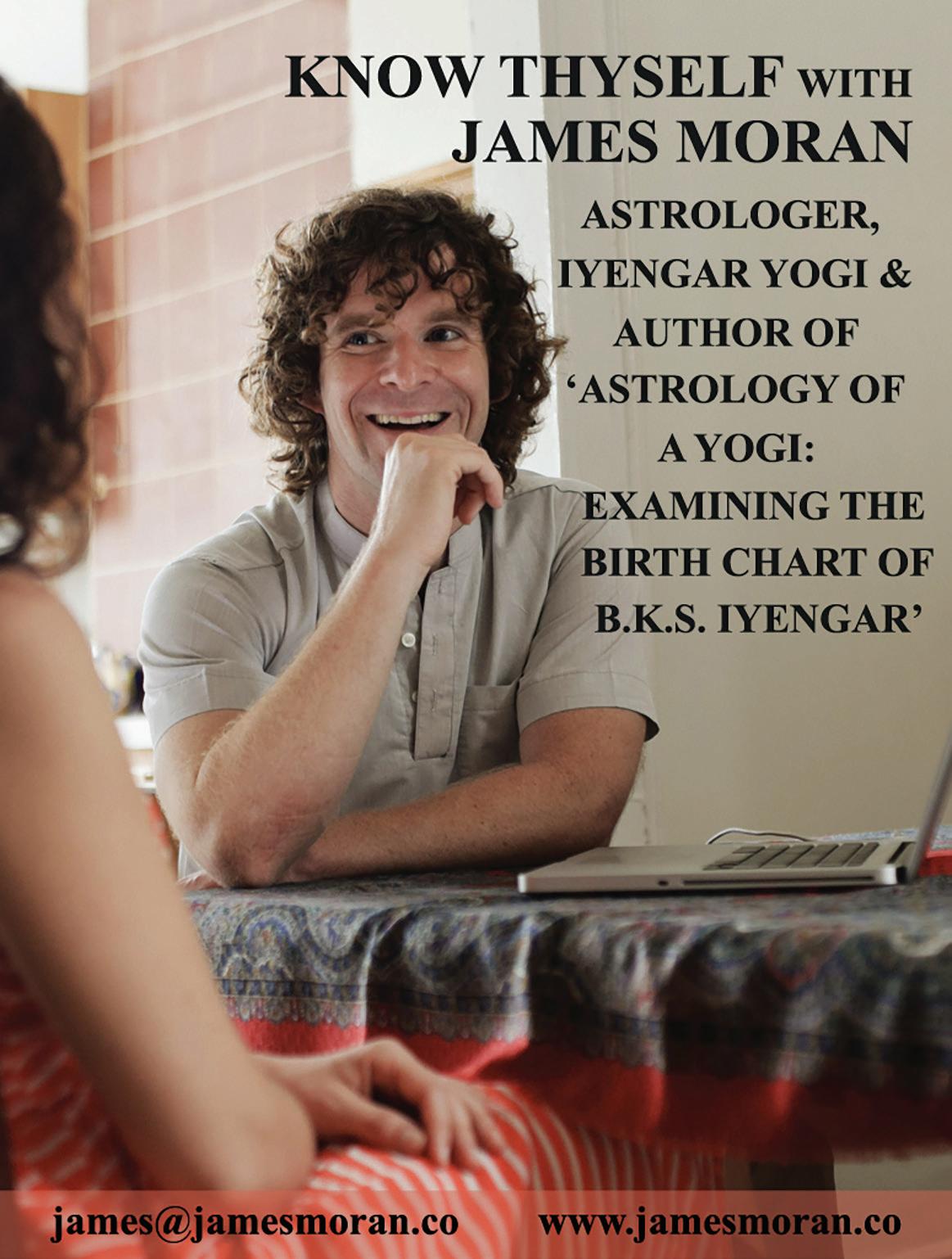
15 minute read
Yogi-Artists Express Themselves
from Yoga Samachar SS2015
by IYNAUS
HOW DOES YOUR YOGA PRACTICE INFLUENCE YOUR CREATIVE LIFE? AND VICE VERSA?
“Iyengar Yoga helps me connect with myself in order to express the soul, to be courageous enough to put my art out to the public. Yoga makes my body and mind a clearer passage for the spirit to create through the body. By learning to recognize the states of mind in yoga practice, I recognize those same states of mind when painting, so the painting as well as the asana become a tool for reading the processes on the field of consciousness.
Advertisement
“The processes in the consciousness that I notice when painting are more easily recognizable when practicing asanas. For example, I notice using too much rational thinking when I’m painting, rather than being present in the moment—and I also notice this in asana practice. The five kleshas (afflictions), for example, are easily recognizable when painting. When I’m in deeper concentration, all of this disappears. Through painting, I understand what is meant by the act of painting, the painter, and that which is being painted, and in rare moments, it happens that it all comes together, and there is nothing but the state of being. Also, strangely, when painting asana, the area in the body that I have not understood in practice comes out distorted and out of balance, and this points me toward the direction of focus in my practice.”
—Jana Chadimova, painter, Czech Republic
Jana Chadimova working on Urdhva Dhanurasana in her studio. Photo: Daniel Papousek Urdhva Mukha Svanasana, work in progress by Jana Chadimova Photo: Daniel Papousek
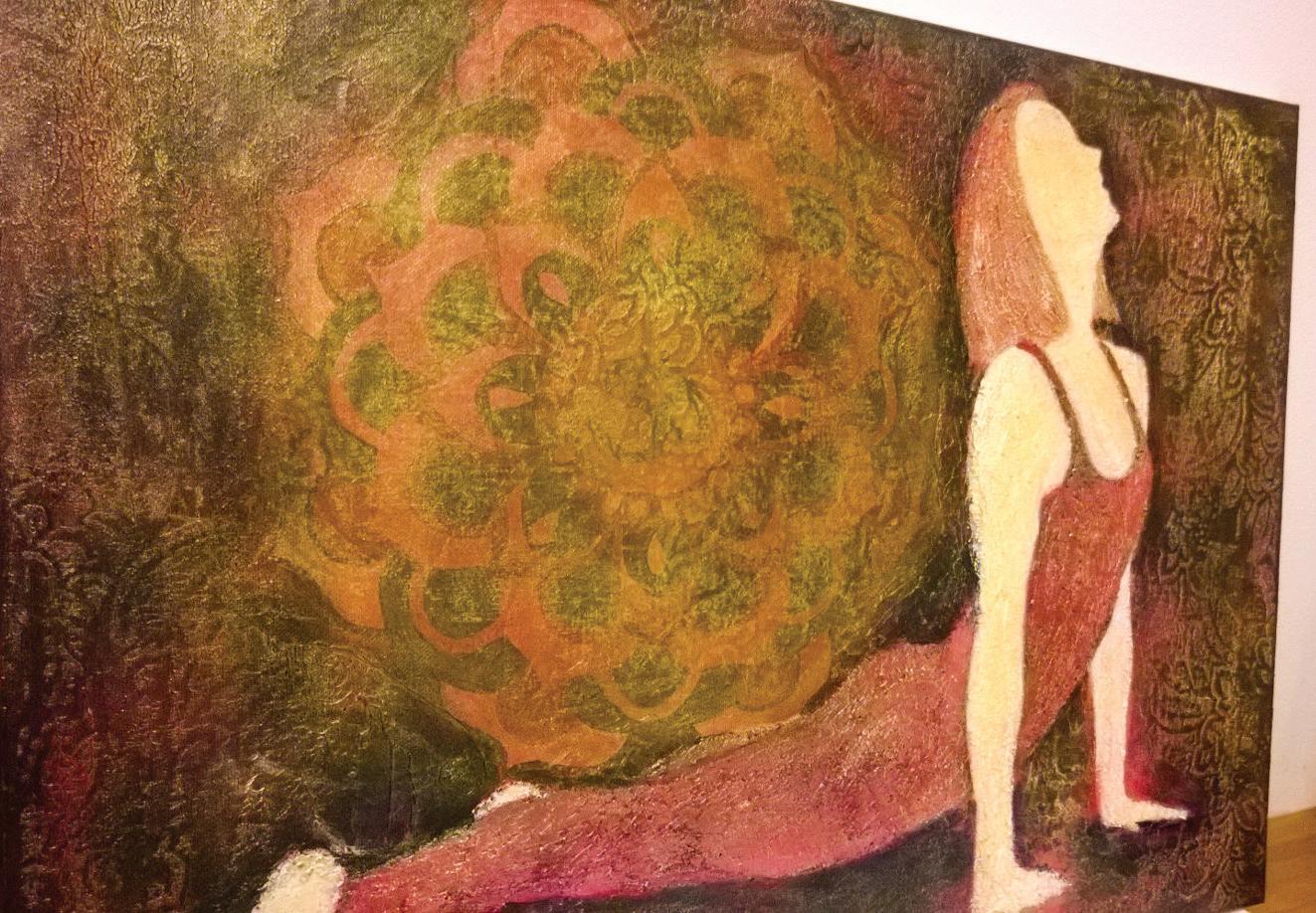
“Iyengar Yoga has improved my painting process on a physical, mental, and spiritual level. I now have no back pain. I carefully do twists and turns when I place the brush on canvas, palette, water, cloth, etc. I am always conscious when coming in and out of a position. I’m also more relaxed, in the NOW, rather than focused on a deadline. I have a sense of meaning in what I do. “Art helps me to be disciplined and practice yoga regularly, and it gives me the patience required to work in other nonartistic fields and the strength to confront some of life’s obstacles. The process of creation has also given me a spiritual sense of meaning, and I enjoy it immensely.”
—Mario Dubovoy, painter, Miami Beach, Florida
Mario Dubovoy at work


Mario Dubovoy painting
“I consider yoga an art and art to be yoga-like, so the process of creating all becomes one. Whether I’m painting, curating, practicing asana, or tying my shoe, they all feed each other in some mysterious way. At least that’s how I think about it!”
—Sharon Hawley, painter and art curator, San Francisco
Sharon Hawley paints or sketches portraits of the mentally ill people she works with. She then photographs the portraits and transfers the images to other paper via chemical processes that erode the images, thereby depicting what she believes to be a more accurate image of the complexity of the human condition. “These downtrodden were ‘hung out to dry,’ so to speak, on a clothesline.”

“To create original, new art, I need time and a free mind. This doesn’t just happen; it takes work and practice and an understanding husband. Practicing yoga helps my mind come to a present state, like a child’s mind, so I can actually see and feel what is going on around me and in front of me and in me.
“When I create art, it is intuitive, a reaction based on years of training and practice.
“When I teach art, I have a general plan, but that general plan can go out the window when teaching children—I have nearly 500 students in a week. Then it becomes the art of teaching. I have to see what materials I have, what students I have, what their abilities are, and how much time I have. Michelle Hill’s class painting rain forest layers. “In the early part of my exposure to Iyengar Yoga, the asanas greatly influenced my dance language. Exaggerated versions of standing poses began appearing in the vocabulary of my dances. Twisting and spiraling motifs, with a pretty big emphasis on breath and flow, broadness and span, became the basis from which I generated movement and how I built and shaped the architecture of any given dance. However, now that I am further along and perhaps deeper in my practice, the influence of Iyengar Yoga has moved beyond the physical into a place that has much more to do with the ability to arrive at a clarity of intention for any given rehearsal period and the ability to engage with what is happening right in front of me, at that present moment, in any given choreographic process. “There are certain obvious connections between asana practice and dance—flexibility, balance, and execution came somewhat easily from the beginning. However, it’s when you start the “Above all, I need to stay calm and keep the children safe and on a path of learning.
“I read in Light on Yoga about the art of teaching. After 12 years of teaching yoga, it is becoming like art. The students become my material. I see how I can best mold or guide the material in that moment, giving change a chance, experimentation a chance, intuition a chance. In my personal practice of yoga, just like in my art, I fail frequently. It took me nearly eight years to do a headstand on my own. My art has helped my yoga by allowing me the freedom to fail and to move on and try again and again.”

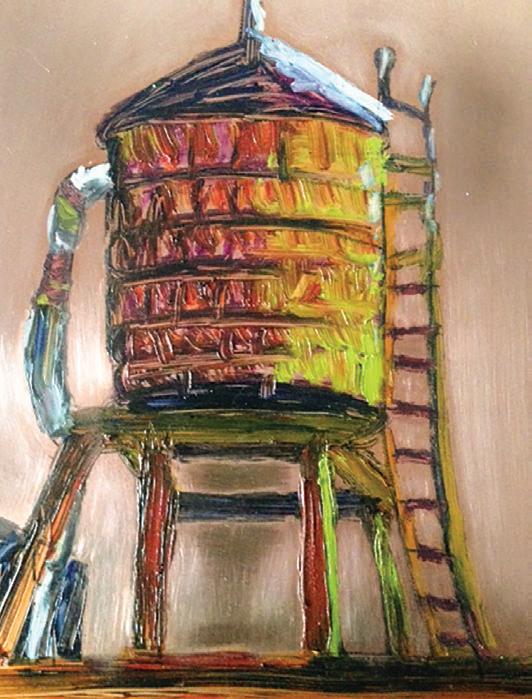
—Michelle Hill, painter, New York City
Michelle Hill, WaterTower, oil on copper
process of refining the asanas and truly seeking a meditation in action—which is such a huge part of the Iyengar system—that I began to realize I needed to undo some of what I was bringing to yoga from my dance background. I thought I understood the body and its mechanics, so it was like discovering for the first time that ‘that trick isn’t going to work here.’… I think perhaps the thing that has most affected my Iyengar Yoga practice from my art is that I finally understood the importance of—to use Geetaji’s term—donkey work. One has to go through the process of holding poses—not necessarily moving through them—to achieve a basic external understanding of the structure of any given pose. In that sense, I brought to my practice a pre-existing understanding of the importance of refinement that is necessary in any artistic or creative endeavor.”

Nicolo Fonte, choreographer, New York City and Portland, Oregon
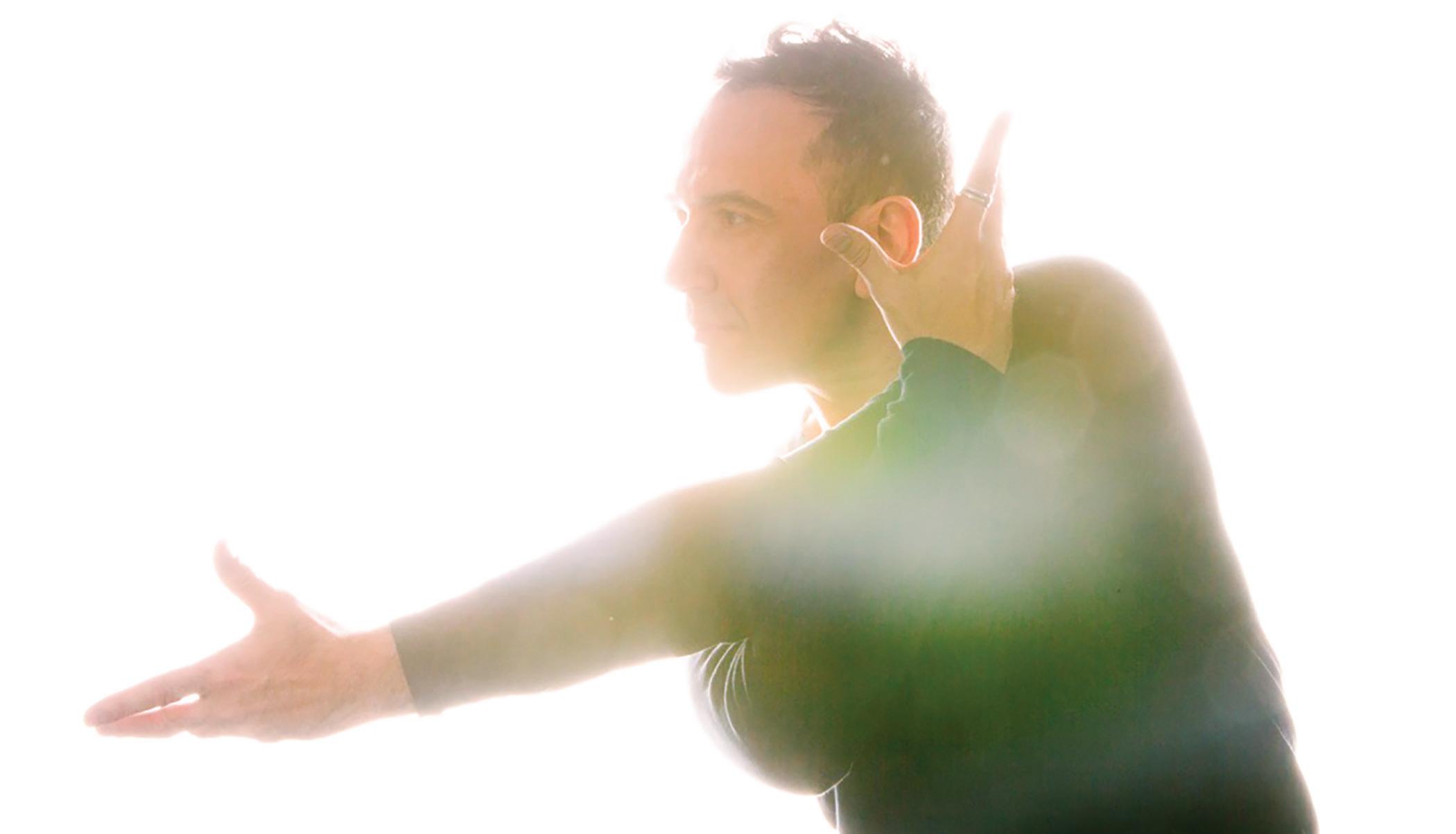
“Over the years, yoga has helped me learn to love and appreciate the process in both yoga and art. Finding content within the process instead of being so concerned with the end result has given me freedom from my perfection-seeking mind. Yoga has also taught me to listen to both my body and my art. In art, like yoga, nothing can be forced, you have to have a relationship with the material. But like the body in yoga, sometimes the ‘voice’ of the material is so quiet it will surely be missed by those who aren’t listening. Yoga has dramatically changed my perspective, my mindful action of making art, and my life.
“My art helps me have a visual experience of some of the emotions I feel in my practice. Like yoga, art helps me clean out extra rubbish in the mind and body. Art has always been a place of constructive failure for me. One painting, successful or not, will inform and inspire the next painting, and so on. This has grounded me in a yoga practice that accepts and even embraces the challenges of failure in both practice and life.”
—Margaux Jacobs, painter, Bellingham, Washington
“At heart, both art and yoga grace me with space and breathing room for the spirit… When I calm my body, I calm my mind and start the free flow of imagination. When my mind is hijacked by thoughts of the everyday, my creativity is hijacked too. Yoga has taught me through asana and through the breath to slow down, quiet the mind, and awaken the spirit…
“The sutras tell us that the goal of yoga is to bring your attention to one single point. Painting teaches me to focus my attention on the brushstrokes of the canvas in front of me. In fact, you have to focus or the result is a mess!
“I have also learned that neither the study of yoga nor the study of painting will ever end. I’ll never know it all. Renoir’s last words about painting, at the age of 78, were, ‘I think I’m beginning to learn something about it.’ I’ve come to understand that observing how I react to the frustration and embarrassment of repeated attempts at a pesky pose is the practice itself. This understanding has helped me when the resolution of a creative project is maddeningly elusive. I’ve learned through yoga to breathe, relax, stay detached, and stop the self-talk of limitations.”
—Dory Kanter, painter, Portland, Oregon
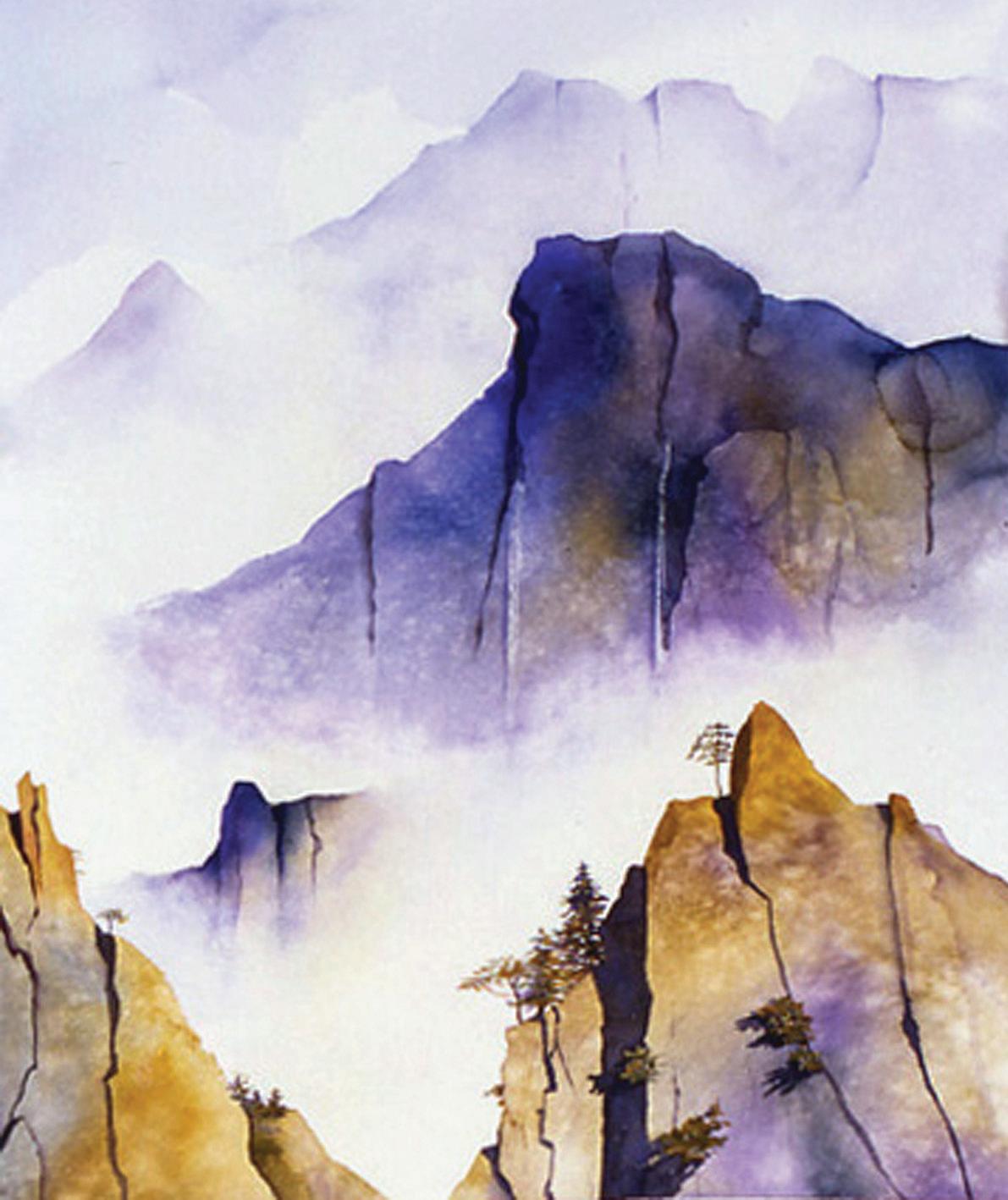
Dory Kanter, Misty Mountains, watercolor on paper. © 2015 Dory Kanter, www.dorykanter.com
“Yoga and writing poetry came springing up together in my life nearly 40 years ago, and each continues to be an essential wonder and a help to the other. A voice is embodied! To listen inwardly, to hear a live voice within, and to begin to write from a flow of sounds, rhythms, and images that surprise and spur me on to explore new territory in a poem: All of this happens most frequently when I’m deeply at ease in my body.
“Any mindful practice of yoga—three handstands or a week’s intensive—can spark the muses, but an ongoing practice—continually growing and cultivating a calm mind, open heart, and strong body—is what, for me, feels needed to keep inspiration fresh in my life.
“A new poem, from start to revision after revision to finish, lightens me, gives back insight. The whole creative process encourages me to keep my yoga practice a discipline and a delight.
“To clarify, deepen, and expand awareness of the intricate harmonies of body and mind—that’s what we’re born for, we yogis!”
—Rosie King, poet, Santa Cruz, California
“The physical part of creating fused glass and watercolors is harder on the body than most people realize. Physically, yoga helps me, and mentally and spiritually, it balances me. Yoga practice and teaching are creative acts for me.”
—Josie Lazarus, glass artist, watercolor painter, Gilbert, Arizona
“In my work, I look for moments that transcend time and the personal and touch the universal. My paintings are about the experience of such moments, when the ego steps aside and we just ARE, when the fabric of ‘reality’ is drawn back to reveal the true nature of things.
“The stuff of life—your life—becomes the fodder for your art, intentionally or not. So that approach to life, that pressing desire to learn, to better understand myself (and the world outside) has helped to deepen my yoga practice. It is the constant relooking at the asanas, my experience of them from day to day, deconstructing and reconfiguring them as my body and understanding require: That is why I am an Iyengar Yoga practitioner and why the subject has held my interest for 25 years. There is always something new to discover, right within the confines of my own body, that incredible vehicle of the soul.”
—Melinda Morey, painter, Oakland, California
“As an artist, I once thought that abstraction and realism were simply the poles of a continuum, a way to identify what kind of art it is and produce it as such. Yoga’s influence has helped me see these things more as a circle containing no distinction between the abstract and the real and no particular set of reasons to make art other than to make art. Yoga has helped me see within my whole self, as a person, and therefore, as an artist.”
— Jim Orvik, painter and woodworker, Bellingham, Washington
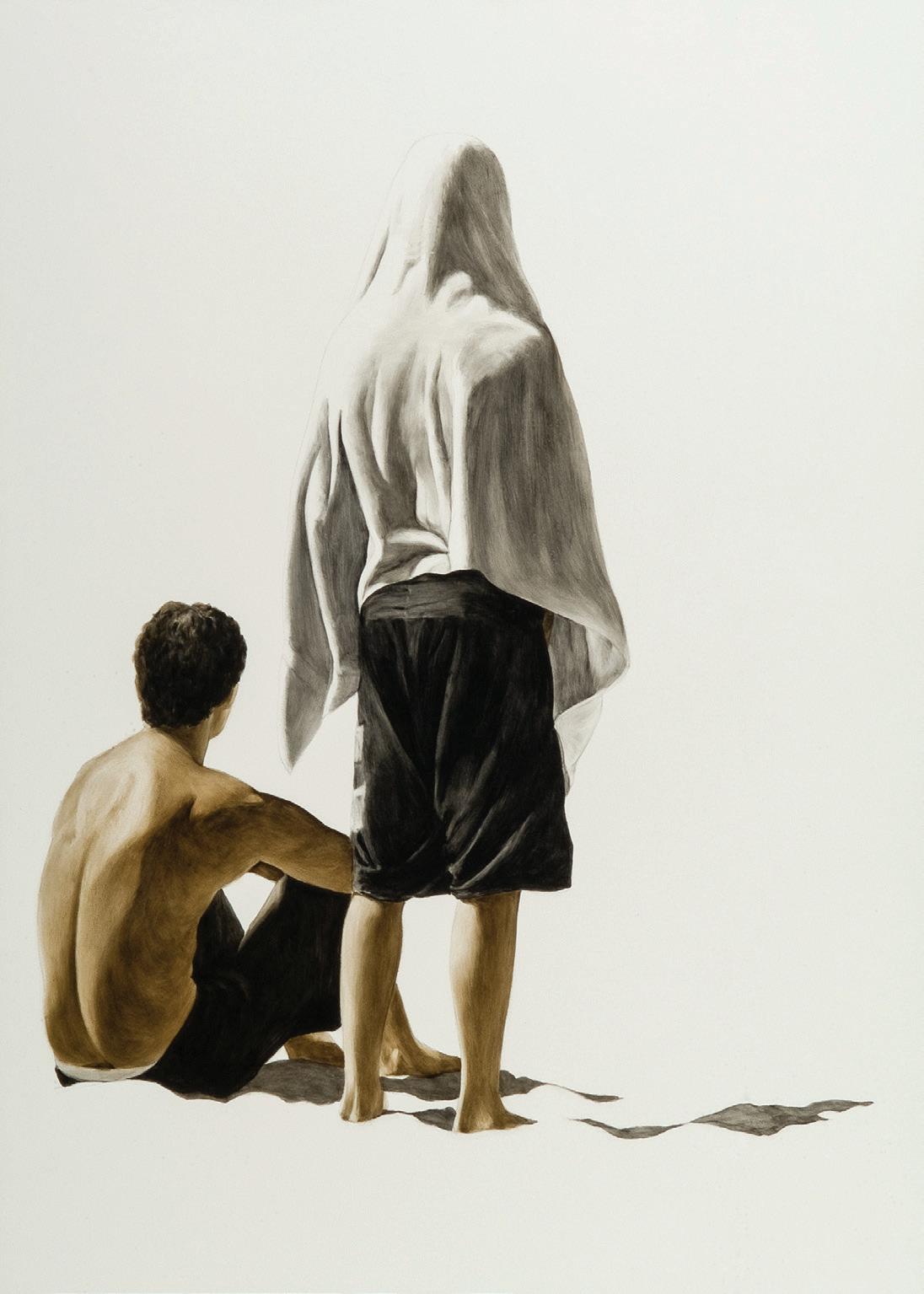
Shelter by Melinda Morey Photo: Melinda Morey
“For me, creativity and yoga as practice has become a model for understanding the singular richness of integration. As a visual artist, musician, writer, cook, gardener, and yoga practitioner, I have been gifted with a deeper understanding of meditation, full presence in the moment, and a continuing residence in gratitude. This, of course, happens when I get out of the way of myself. The greatest return, however, is looking into the eyes of another and knowing that all of these attributes are carried inside each living being.”
— Judy Orvik, glass artist, Bellingham, Washington
Spawn I watch you from the rotting wooden bridge in this long anticipated season repeating your ritual swim against the current, Imagining yourself into a silted conception.

Are you weary in your wisdom as your deepened scaly shades wash away in creation, leaving some new deposit of possibility? Your old softening bones float out to sea one small ripple at a time.
—Judy Orvik
“I find it challenging to do both [my creative work and my yoga practice]. Yoga and art are both practices that require tremendous amounts of time, contemplation, and devotion. For me, they are similar in some ways and also very different. At their essence they are both interested in form. In yoga, we do asana and pranayama to create a container, or form, for consciousness. I am an installation artist, so the discipline of yoga can be helpful in thinking about the way in which material forms in art create space. They are both creative practices at this level, open to innovation and imagination. However, in art that inner space is full of meaning and content, and in yoga I experience that space as empty—a kind of joyful void. Because my art form leads me to a space that is very content-rich, there is a lot of material to mine there. My art practice ensures a kind of awareness at that level. It keeps it real.”
—Rebecca Weiseman, installation artist, Burlington, Vermont
“I have been a working artist making drawings, paintings, sculptures, and videos for over 30 years. My process is at times meditative, repetitive, and precise; it also includes wondering and wandering. I often work with structure; however, the results are not always predictable.
“In my art-making, I tend to work in series, delving into investigations that hold my attention, require my action, and keep me curious. Different bodies of work activate or require different kinds of attention from me and from the viewer as well. Some guide the viewer in a way that allows the ego or the intellect to recede and invites them to see the work less with the mind and more with the body, while other work might activate ideas and thought. Measure, repetition, and patterns in my work provide a ground that allows the viewer to go in or expand out while still having a path. “The path of Iyengar Yoga for me often starts in my feet as I feel Tadasana to be the ground within all my asanas, allowing for expansion in all directions while staying rooted. Bringing the body both in toward and out from the center allows for movement and expansion both internally and externally.
“Both yoga and visual art are embodied practices that begin with shape and form and require intellect, sharpness, and clarity. What holds my attention in both is when I find the balance that allows the body to recede along with the mind, as in Savasana, and the freedom that comes with that.”
—Nancy Brooks Brody, visual artist, Brooklyn, New York
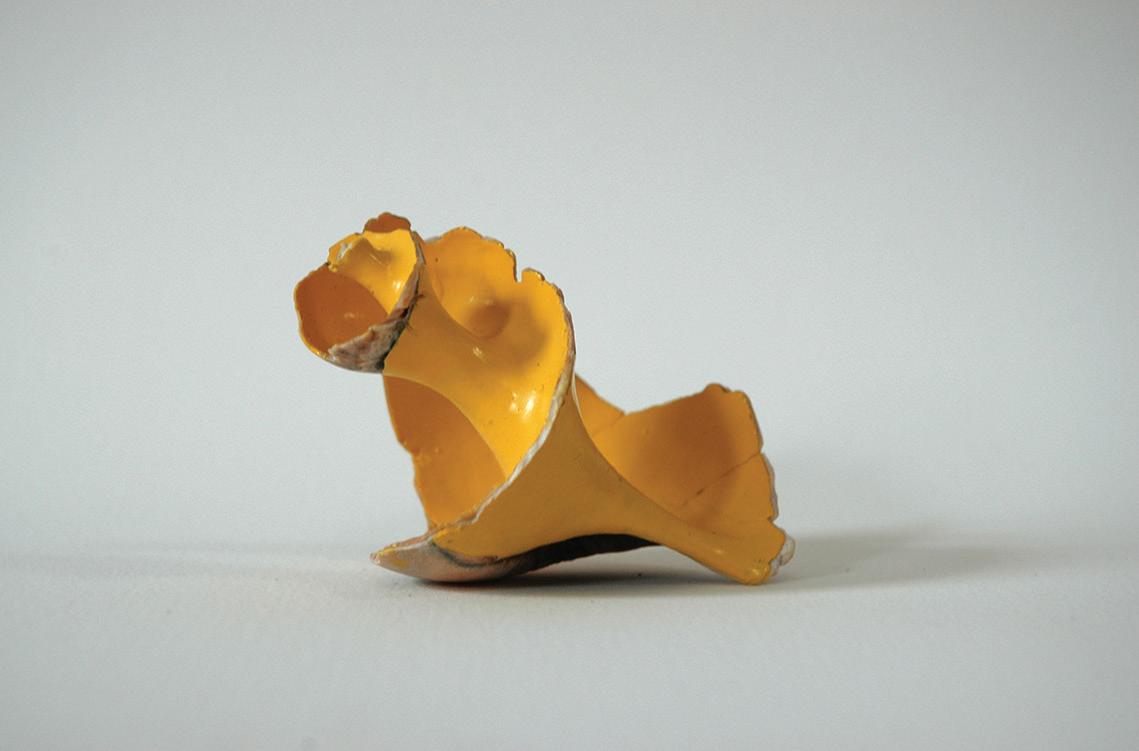

Nancy Brooks Brody,Yellow Shell
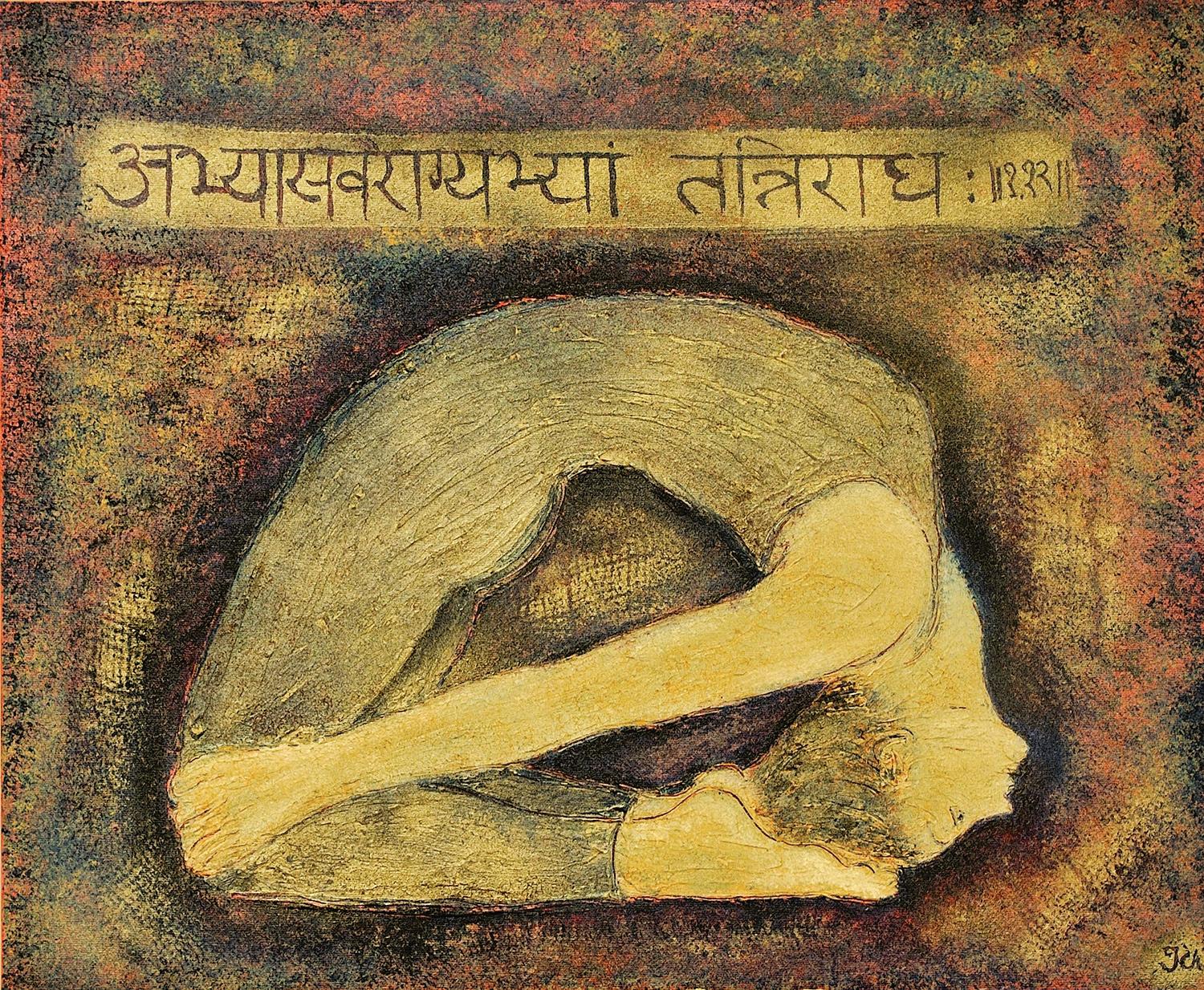
“For me, creating art is similar to Iyengar Yoga in the sense that I am present, very present. I am not at all concerned with the outcome of my piece. In fact, I don’t even know where it is going so there is no point in thinking or worrying about it. The process is the work for me. The pen goes down over here, the paint goes there, and while not arbitrarily placed on the page, the lines created inform me of my next move. But I must remain loose and not force the work for it to flow.
“My art is always in my blood and bones, meaning it never leaves. I can take time off and I will always remember how to make beautiful lines on a page. However, if I take too much time off from producing work, it will take me a bit longer to get into the heart of creating. I may overthink things and have doubt if I haven’t practiced drawing in a Laghuvajrasana, with Sutra I.12 - Abhyasa Vairagyabhyam Tannirodhah by Jana Chadimova while, and it doesn’t flow out of me with the Photo: Daniel Papousek same ease as it does when I am consistent with my craft. In these ways, Iyengar Yoga reminds me to keep practicing and to not let too much time pass in between. Because as much as my nerves and muscles remember the poses, my head is too involved when my heart would serve me better.”
—Eve Hammer, painter, Long Beach, New York
